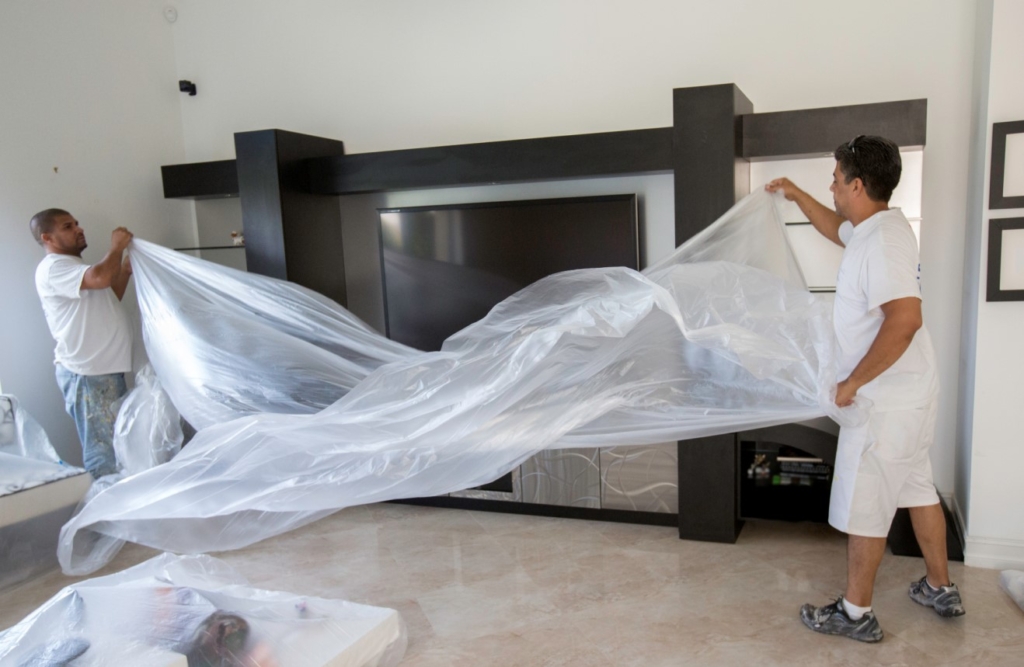5 simple tips to help your crews minimize dust indoors
 Dust is the enemy of adhesion, not to mention it can make a mess of a customer’s home or business. If you minimize it, that can help with customer retention, reduce cleanup work, and even boost your overall professional image. Here are five simple dust-mitigation tips for your crews to keep in mind.
Dust is the enemy of adhesion, not to mention it can make a mess of a customer’s home or business. If you minimize it, that can help with customer retention, reduce cleanup work, and even boost your overall professional image. Here are five simple dust-mitigation tips for your crews to keep in mind.
It starts with the drop cloths
Monty Byars of Byars Painting & Drywall Finishing in Rives, TN says one of the easiest ways he is able to keep dust down is by simply washing his drop cloths regularly. Pros may underestimate how much debris they drag from one jobsite to the next. “It’s something I really make sure to do. Otherwise, you just stir up dust from the last job and it gets in the air,” he said.
Working with others
Sometimes a job involves other trades. Amy Davis, VP of operations for Five Star Painting, advises her teams to pay close attention specifically to those other workers who may need access to areas near paint crews.
“If possible, avoid having other trades working in the same space as where the painting is being done, especially if you are painting trim, doors or cabinets,” she said. “Just walking around the space will kick up dust, which will stick to newly painted surfaces.”
Davis also supports her teams using plastic zip walls to separate rooms and sections of a home to minimize dust drift.
Plastic covers
Plastic covers keep dust from collecting on furniture and other items. Byars has a hard rule to not reuse plastic, too. “Once we’re done, we discard it. It’s one of those things where you look at it and think, ‘maybe it doesn’t look so bad’ but, just like the drop cloths, you’re taking dust and dirt from one place to another,” he added.
Vacuums and sanding
When it comes to minimizing dust, power sanders with vacuum attachments are a must. For drywall, Byars uses a Porter-Cable sander with a vacuum attachment; and for wood or door sanding, he prefers his SurfPrep system. Davis says her teams have had good luck with Festool sanders and their dust-extraction systems.
“Much of the newer sanding equipment these days provide for attaching a shop-vac or HEPA (high-efficiency particulate absorbing) vacuum to the equipment in order to minimize the amount of dust that could become airborne,” Davis noted.
For hand-sanding, Byars also has a practice of keeping a vacuum cleaner by his side as he works.
Microfiber towels
Byars has established a practice of keeping microfiber cloths handy for wiping down surfaces after sanding, especially walls with new sheet rock. For larger drywall surfaces, he’ll use a microfiber mop. In general, he makes a habit of wiping down just about every surface with microfiber throughout the day.
“We do catch a lot of dust on handrails and areas like that,” he added. “When it comes to dust, it’s not really one method, but several methods we put in place to keep the jobsite cleaner overall. They’re not all necessarily directly related to dust, but they all kind of help.”
More articles on dust mitigation can be found at inpaintmag.com


